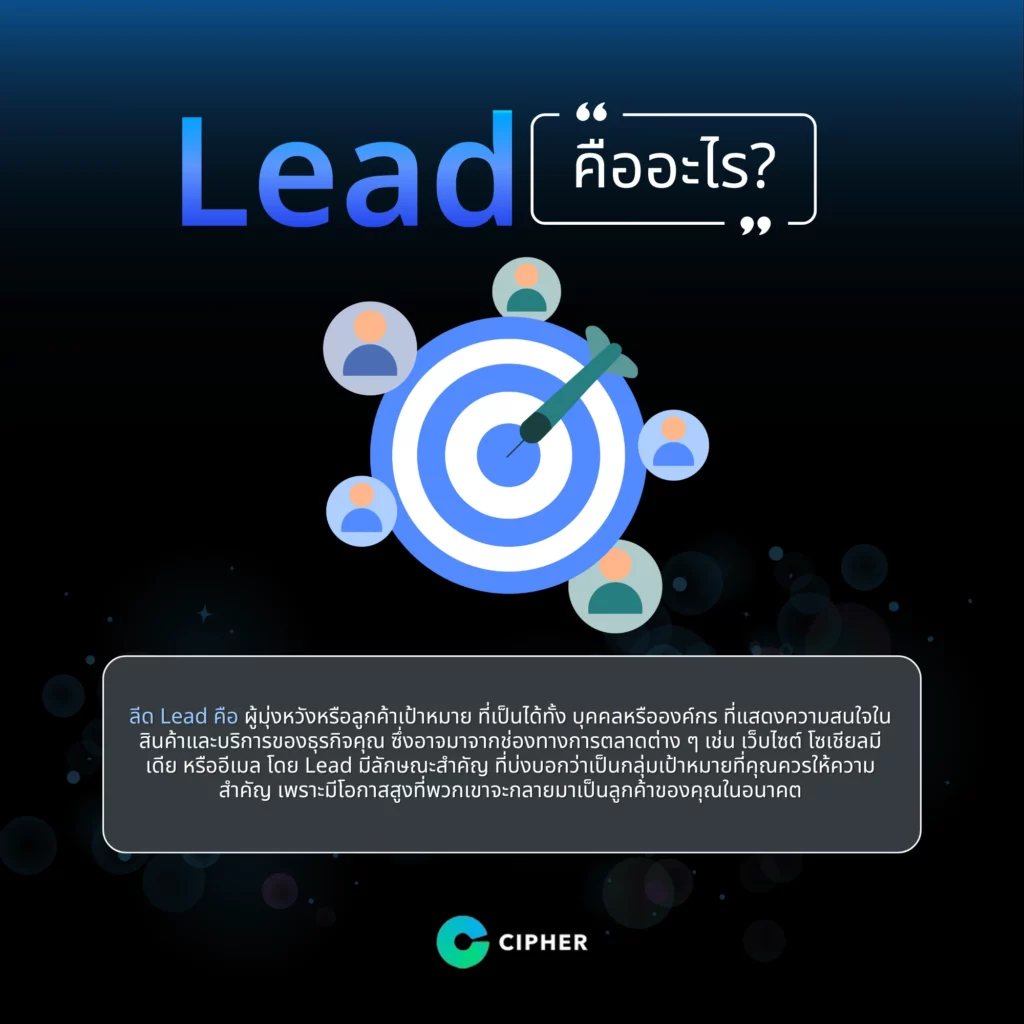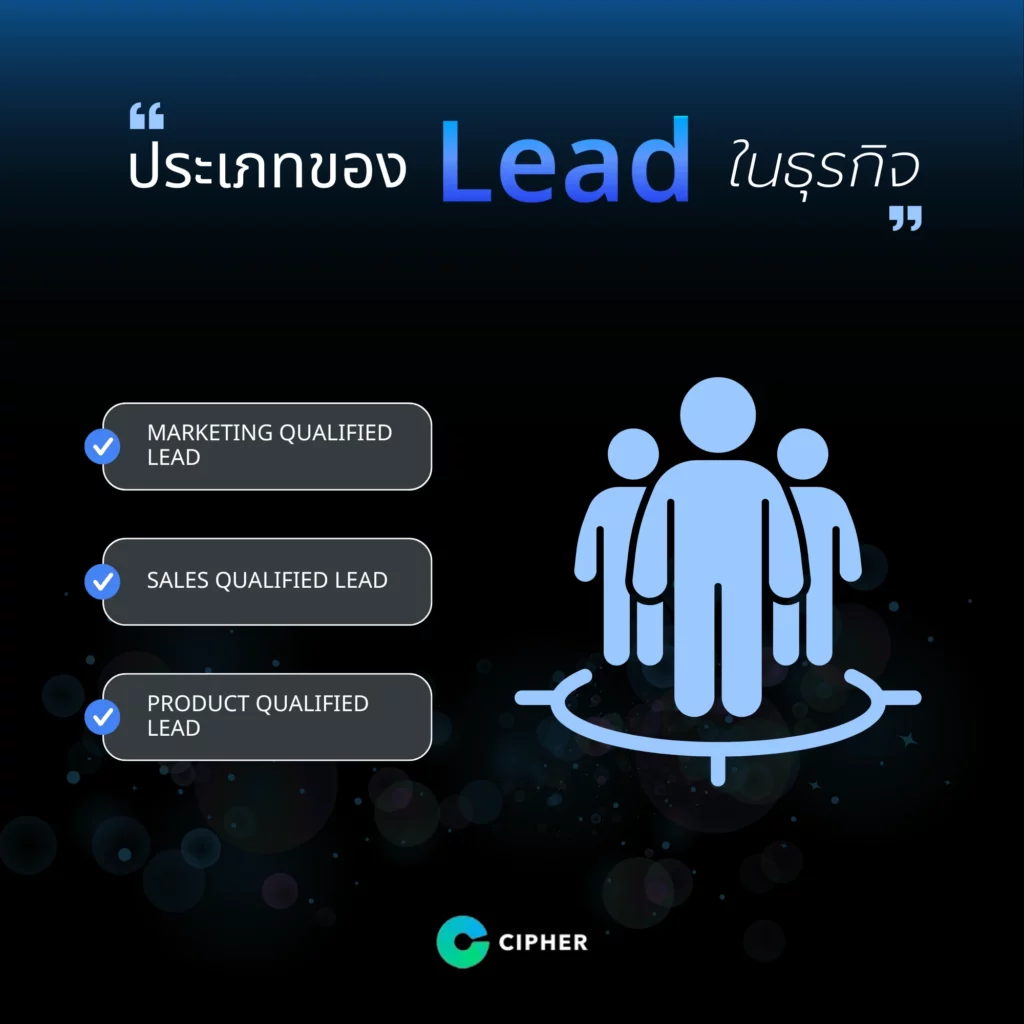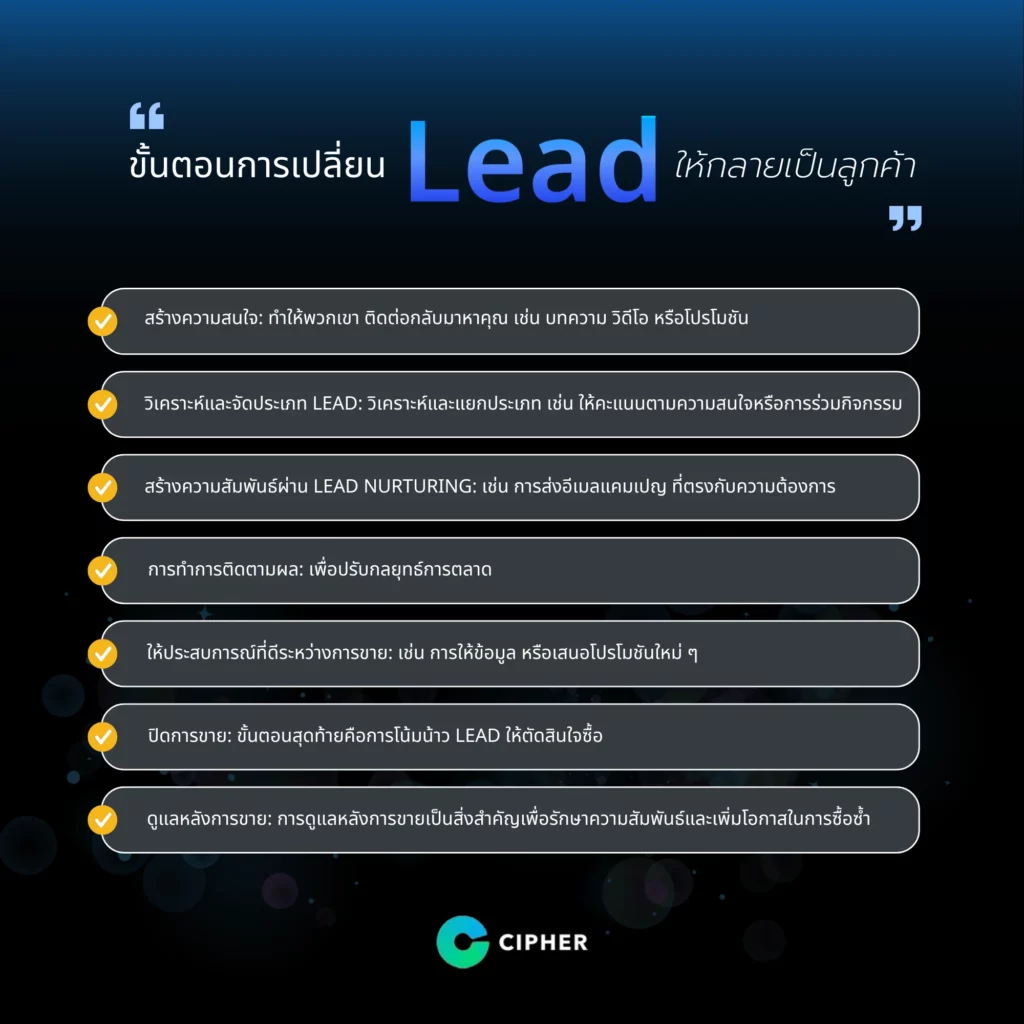Table of Contents
Lead is… What kind of lead is ready to be a customer of your business?
In the online world of business, generating sales doesn’t just begin with closing sales, but with understanding your lead or “those who show interest in goods and services” first, understanding who the lead is. ? How are you behaving? ? And at what stage of the purchase decision? This will enable you to effectively adjust your marketing strategy and increase the opportunity to turn Lead into a true customer.
This article will take you deeper into what “Lead” means. What” type of lead and how to identify which lead is ready for customer transition, and suggest strategies to help your business generate quality leads to sustainable sales growth!
Lead is… What?
Lead is an individual or corporate target customer who shows interest in your business’ products and services, which may come from marketing channels such as websites, social media or email. Lead is an important characteristic of being targeted.

But not all potential leads will definitely become your customers. Therefore, businesses need to separate leads based on the level of interest and availability. Lead can be divided into three main categories:
- Cold Lead: Lead that shows little interest and is not likely to buy immediately, such as those who subscribe to information but did not have a desire to buy at the time.
- Warm Lead: Lead becomes interested in your products and services and may be looking for alternatives such as people who ask for more information about the product.
- Hot Lead: is a lead that is ready to buy goods/services and just needs further persuasion or advice, such as someone who compares prices or asks for a quote.
Types of Lead in Business
In marketing and sales, understanding lead types is important because it allows you to strategize on the spot and increase the opportunity to close sales. Here are some of the most popular leads used in the business. The closer you get to becoming a customer, the more likely you are to become a hot lead.
Some leads may come from customers visiting brand content, others from filling out forms on the website, or even from sales teams making their own Outbound Outreach, different levels of interest for each type of lead. Therefore, leads are categorized according to brand-related activities. It is divided into 3 main categories as follows:

Marketing Qualified Lead (MQL)
MQL or Marketing Leads refers to an aspirant who has met the criteria of marketing department or a lead who shows interest in your business through marketing activities such as downloading documents, filling out forms or responding to marketing campaigns, but is not ready to purchase products immediately. Which will be important features such as
- In addition, they respond to content or campaigns such as newsletters, e-book downloaders or users who click on ads and sign up for information.
- There has been no clear demand for purchase, but it is likely to be high.
Sales Qualified Lead (SQL)
SQL, or Sales Aimers, refers to a lead that has already been checked by MQL or Marketing Leads and has been found to be ready for sale. It is a lead that is clearly interested in goods or services and may be in the process of making a purchase decision, such as
- Show interest in talking to a sales representative and calling in for product details.
- Those who fill out a form for a quote or fill out a form on the Sale Page for promotion.
Product Qualified Lead (PQL)
PQL, or prospective users who have passed the product usage threshold, refers to a lead that has tried out a product or service and shows that they are ready to upgrade or purchase in a paid form.
The key features of PQL are different from SQL and MQL or Marketing Leads, such as those who have used trial versions of products or services or free versions, such as those who have signed up for a free 14-day trial and want to upgrade to full-scale, expensive features.
Lead qualification to become a quality customer
Changing Lead to Qualified Customer is not a coincidence, but it depends on considering the properties of those leads. The key features of Lead that are highly likely to become quality customers are as follows:
- There is a problem or need that corresponds to a product or service: Lead that has a clear problem or need for your product or service, such as customers looking for automated marketing tools and showing interest in software services for your work management.
- Budget enough: Potential leads pay for goods or services will make it easier to close sales, such as businesses looking for CRM software and budgeting to match your pricing and services.
- Have decision-making power: Lead with decision-making power to buy or participate in the decision-making process is a lead with a high chance of becoming a customer, such as a purchasing manager responsible for selecting a software provider.
- Explicitly express interest in products or services: Lead responding to marketing campaigns such as requesting more information, applying for a trial or advertising click indicates real interest, such as those who sign up for free trial and re-use.
How to Identify Quality Leads
Lead identification is a key step in the sales and marketing process because not all leads have the opportunity to become real customers. Therefore, effective lead screening will help sales teams focus on the most potential leads and facilitate closing opportunities.
1. Use BANT Criteria
BANT is a popular tool for evaluating leads based on
- Budget: Does Lead have enough budget for goods or services?
- Decision-making power: Does Lead have the power to make purchase decisions or involve the decision-making process?
- Need: Does Lead have a need for your product or service to meet the requirements?
- Time Range: Is Lead Ready to Make Purchase Decisions at the Right Time?
2. Evaluate Lead Behavior via CRM System
CRM or Customer Relationship Management systems such as the HubSpot CRM platform can be used to track and analyze lead behavior, such as:
- Clicking Advertising
- Opening Email and Reply
- Visiting a specific Web page, such as a quote page or a product-related page
3. take a form with a specific question
Designing a subscription form or filling in good information helps filter out quality leads, such as:
- Ask questions about the needs of users in specific and interested goods or services.
- specify a budget on the form
- Stores information about roles or locations in an organization.
4. Analysis based on content engagement
Lead interacting with content such as e-book downloads or query responses is often of higher quality than lead not interacting at all. Business owners can track platform activities such as the number of times Lead visits the website or times spent on the website through marketing tools such as Google Analytics or Hotjar.
5. Use Lead Scoring
Lead Scoring is to rate Lead based on behavior, interest, and basic information. Based on the score based on various behaviors, and weight based on the importance of each activity to set minimum score criteria for quality leads, for example:
- Opening email = 5 points
- Filling out a detailed inquiry form = 10 points
- a request for a quotation=20 points
The process of turning Lead into a customer
Turning Lead into a customer is not just a product offering, but a process that requires appropriate strategy and care to ensure that Lead is trusted and ready to make purchase decisions. There are important steps that help turn Lead into a customer as follows:

- The first step is to attract the attention of the lead and get them to call you back, for example.
- Use attractive content such as articles, videos, or promotions.
- Use a Landing Page with forms designed to store important information such as email and phone numbers.
- Use ads on online platforms such as Facebook Ads or Google Ads.
- Analysis and classification of leads: Not all leads have the same potential, so analysis and classification of leads are important, for example:
- Use the Lead Scoring system to rate leads based on behavior, such as clicking, downloading documents, or visiting specific web pages.
- Use the BANT (Budget, Authorization, Need, Timing) criteria to screen the sales ready leads.
- Build relationships through Lead Nurturing: Some leads may not be ready to purchase immediately, so providing additional information and establishing relationships is an important step, such as:
- Sending campaign via email
- It provides information that meets the requirements such as product manuals or reviews from real users.
- Use the CRM system to track and customize text for each lead.
- Follow-up: Interested leads require follow-up. Brands or businesses should show attention, such as:
- telephone a person for further inquiries
- Respond quickly to questions or questions via email or chat.
- Use special offers, such as promotions, to encourage faster decision-making.
- Provide a good experience during sales: leads that are professionally supervised in the sales process tend to make easier purchasing decisions, such as:
- provide complete and transparent information
- offer a demo or trial run of a product
- Modify the presentation to meet the specific needs of the lead.
- Closing the sale: The final step is to convince Lead to make a purchase decision, for example:
- Offers special conditions such as discounts for first-time orders
- Use words that stimulate the decision, such as “This promotion is only until the end of this month.”
- follow the aftermath of a continuous discussion
- Aftersales care: Once Lead becomes a customer, aftersales care is important to maintain relationships and increase opportunities for repeat purchases, such as:
- send a thank-you note after purchase
- Provides support services such as installation help or usage instructions.
- Ask for review or advice to improve the product or manage it better.
Summary
Lead is… What? Lead is the one who shows interest in your business. With the potential to become a customer if properly supervised and monitored, understanding the lead at each level will help your business establish a target strategy and increase sales opportunities effectively. If you want to develop your business sustainably, focus.





